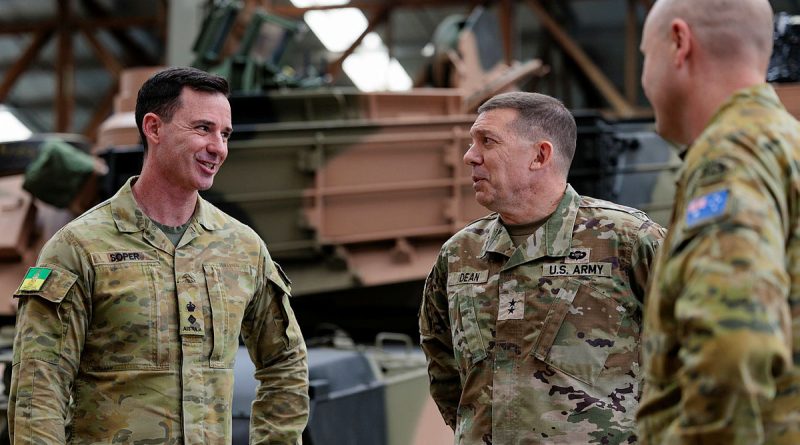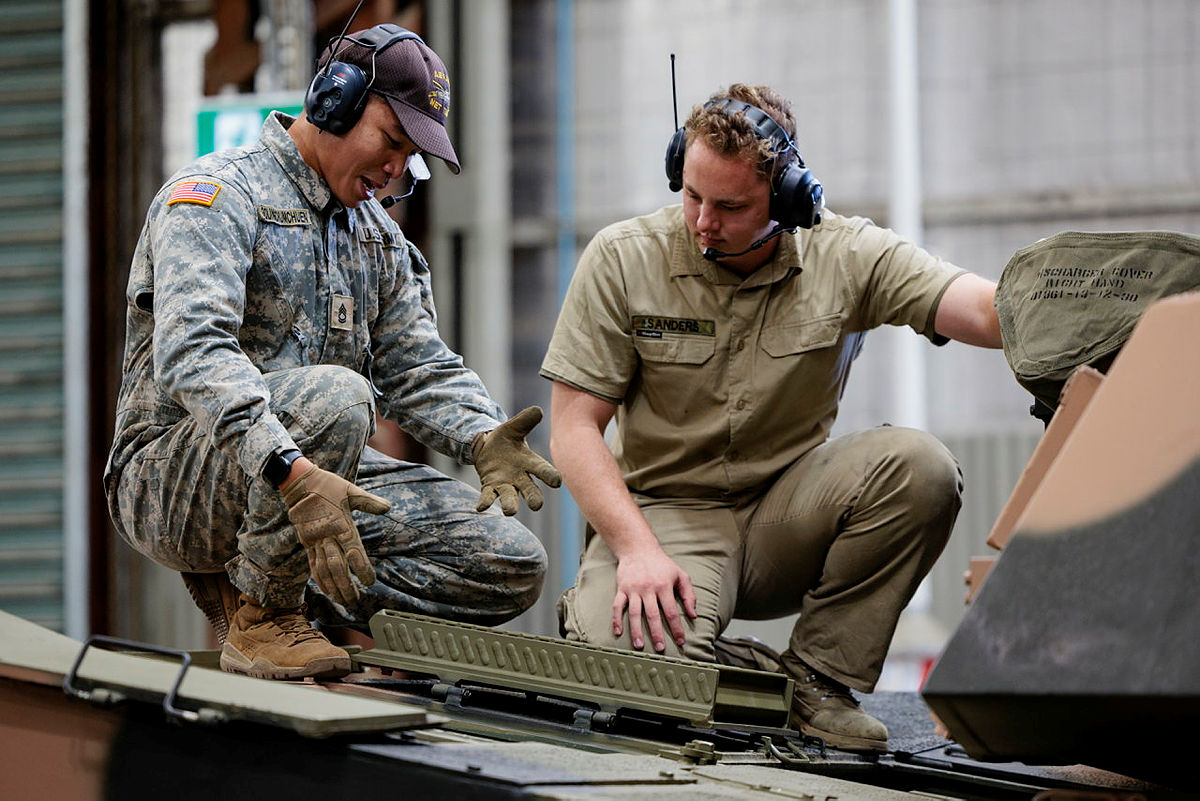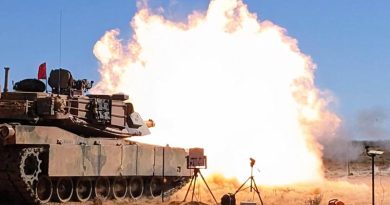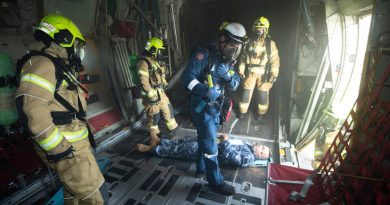Tank course reflects partnership with US

Vehicle mechanics and electronic technicians across Army finally have their hands on the new M1A2 system enhancement package version 3 (SEPv3) main battle tanks after they arrived in Bandiana, Victoria.
CAPTION: US Army Major General Glenn Dean, centre, speaks with Commanding Officer Army School of Electrical and Mechanical Engineering Lieutenant Colonel Tim Soper, left, during the Abrams M1A2 main battle tank maintainer course at Gaza Ridge Barracks, Bandiana, Victoria. Story by Captain Krysten Clifton. Photos: bySergeant Andrew Sleeman.
The new US-led field maintenance new equipment training (FMNET) course at Army School of Electrical and Mechanical Engineering (ASEME) is a first-time blend of how US maintainers and Australian soldiers work with the M1 family.
Australian Public Service armoured vehicle maintenance instructor (and Army reservist) Andrew McAdie said the US had one maintainer for all systems in the tanks, whereas the ADF had three different trade groups.
“We have the electronics technicians who look after the sighting systems, the armament soldiers who look after the weapon systems and the vehicle mechanics who look after the hull,” he said.
“We typically separate those into three separate courses for the Australians, but for the initial part of this course, the electronics technicians and the vehicle mechanics are working together.”
The course was visited by US program executive officer, ground combat systems, Major General Glenn Dean III, in September, who compared the course with the regular maintainer training in the US.
“It’s certainly very, very impressive, the depth of knowledge that is imparted to the students here,” he said.
“As a material developer responsible for the delivery capability, I’m really excited to see what we learn from your integration experiences.”
The M1A2 SEPv3 provides accurate and lethal fire mobility and situational awareness for the commander. It is one of the most technologically advanced tanks in the world with enhanced survivability and superior mobility across ground. Major General Dean said the M1A2 SEPv3 was very well received by the US Army.
“It’s been the most reliable and durable version of the Abrams that we’ve produced over its long history – I’m hoping that the Australian experience is the same,” he said.
“Australia has joined us in every scrap we’ve been in for the past 100 years, and I’d like to think that you’ll be there for every scrap we get into for the next 100. To be interoperable, both by using the same equipment and similar procedures, is critical to that, and allows us to build those relationships.”
From a student perspective, Mr McAdie was most impressed by protection upgrades.
“The tank’s ability to lay fire from almost any position in any terrain fills the rest of the combat training team with an enormous amount of confidence,” he said.
“But the most important thing with our vehicles and equipment is to make sure that our soldiers are safe in the theatre.”
Commanding Officer ASEME Lieutenant Tim Soper said the upgrade skipped three generations of digital enhancement, making for a dramatic change to the Australian Combined Arms Fighting System.
“Specific to the National Defence Strategy, if we look at the land power contribution to the joint force, the combined arms fighting system is critical for enabling us to sense, understand, decide and act,” he said.
“The enhancements in terms of lethality, protection, mobility and the enabling elements and networking of this new platform are critical to that combined arms fighting system and enables Army to deliver what only Army can deliver, which is land combat power.”
CAPTION: US Army First Sergeant Duongchumchuen provides instruction on the Abrams M1A2 main battle tank to Australian Army Craftsman Jake Sanders during a maintainer course at Gaza Ridge Barracks, Bandiana, Victoria.
.
.

.
.






